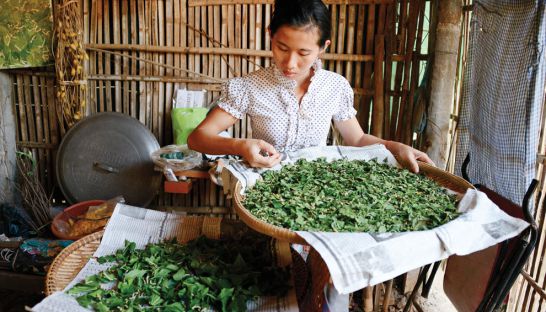Plan aims to rebuild silk sector
Plan aims to rebuild silk sector
With Cambodia’s storied silk industry in rapid decline, the government is looking to revitalise the sector with a new development strategy aimed at making local sericulture more modern, sustainable and inclusive, officials said during a recent industry event.

Mao Thora, secretary of state for the Ministry of Commerce and chairman of the Cambodia Silk Sector Development and Promotion Commission, said a government-led initiative will seek support from international donors and investors to rebuild the nation’s flagging silk industry.
The strategy aims to move toward producing high-value silk products in order to create jobs and reduce poverty in rural communities, especially among women.
“We want to find investment partners because right now silk is a family scale business and the export is [minimal] because the quality is poor,” Thora said.
The commission has drafted the strategy with the support of the Ministry of Commerce and technical assistance from the International Trade Centre (ITC), part of the World Bank Group. No budget or agenda has been announced.
However, the ITC, which has worked closely with Cambodia’s silk industry since 2003 and helped local producers access international markets, confirmed it will be a donor for the initiative.
Xuejun Jiang, chief of ITC’s office for Asia and the Pacific, said his organisation prioritised Cambodia’s silk sector because the majority of the country’s 20,000 weavers are women.
“Another reason is because, based on many studies, we have concluded that silk is a product that has good potential for export,” he said.
“We have been working closely with many companies in the silk sector but only the private sector can make trade happen, of course this will require the strong support and commitment of the government,” he added.
Government support, as well as international donor commitments, has been crucial to the success of Artisans Angkor, which operates a silk farm and workshops in Siem Reap province and is one of the country’s largest producers of silk products.
Earlier projects aimed at improving silk breeding techniques, designing training programs, encouraging local cultivation of mulberry trees – the silkworm’s food source – and trade promotion.
“One of its latest efforts was to establish centres to breed silkworm species most [suitable for] Cambodian soils and weather conditions,” said Vidano Kernem, secretary-general of Artisans Angkor.
He said the future of Cambodian’s silk industry depends on the cultivation of sufficient mulberry trees to feed silkworms that produce high-quality silk, and for producers of this silk to develop creative designs that attract both local and international clients.
“The future growth of the silk industry will partly depend on the sustainability of each component of the value chain,” Kernem said.
“The success of the research to breed the right species of silkworm that shall produce a high yield of silk threads and the accessibility and availability of the eggs to Cambodian breeders is essential to ensure availability of quality Cambodian silk threads at competitive cost to the producers,” he added.
Cambodia currently imports 300 tonnes of silk annually to meet market demand, which Mey Kalyan, senior adviser of the Supreme National Economic Council, argues could be produced locally.
“It is possible to do [produce silk] in Cambodia and it is useful to do so . . . and beneficial to women,” he said.
In the absence of official figures, he estimated local production at about 3 or 4 tonnes a year, adding that the government does not appear to recognise the value of the local industry.













